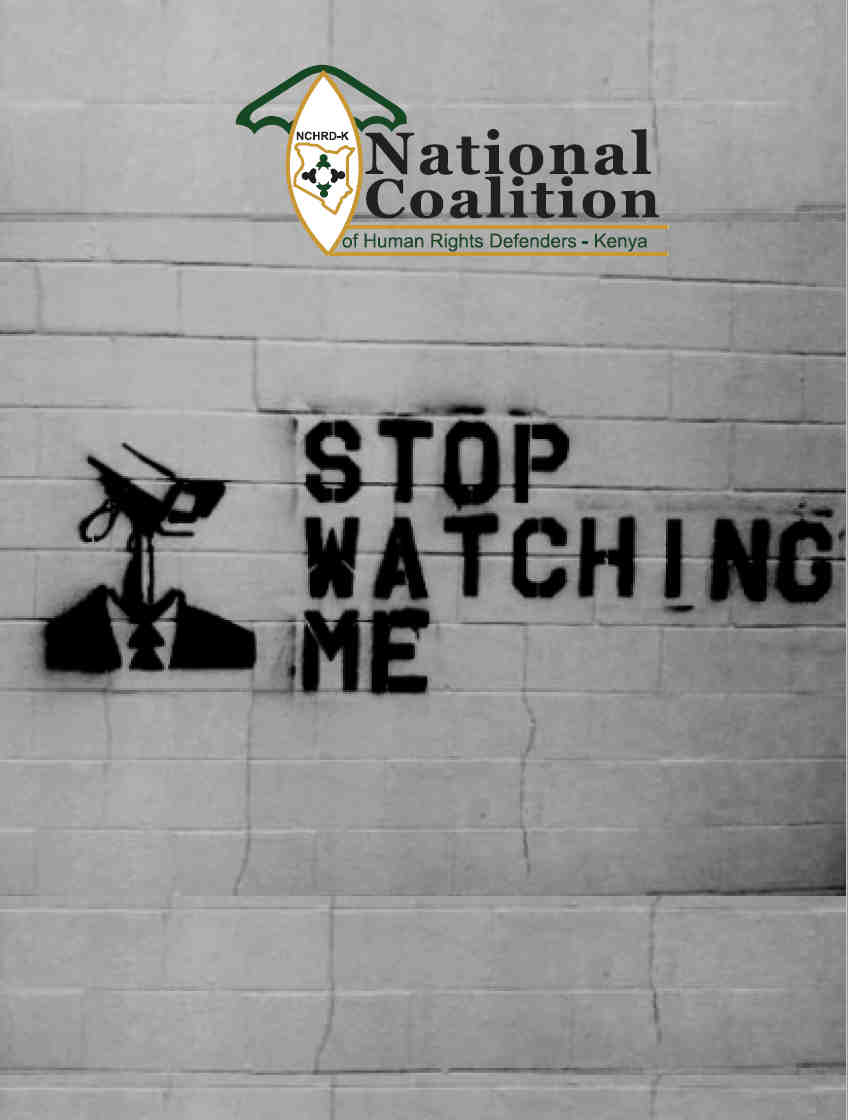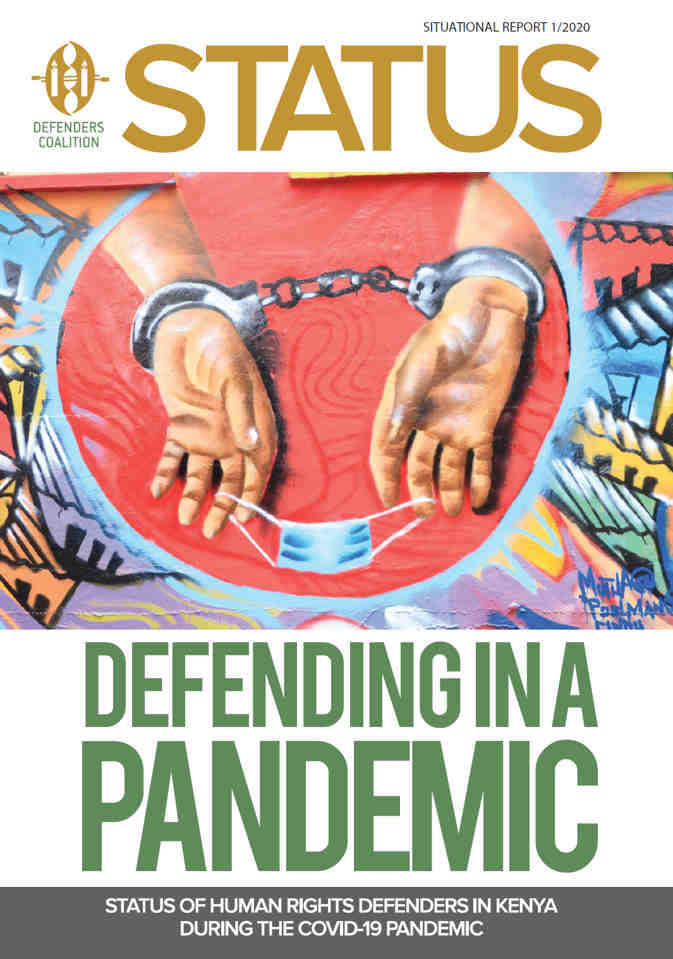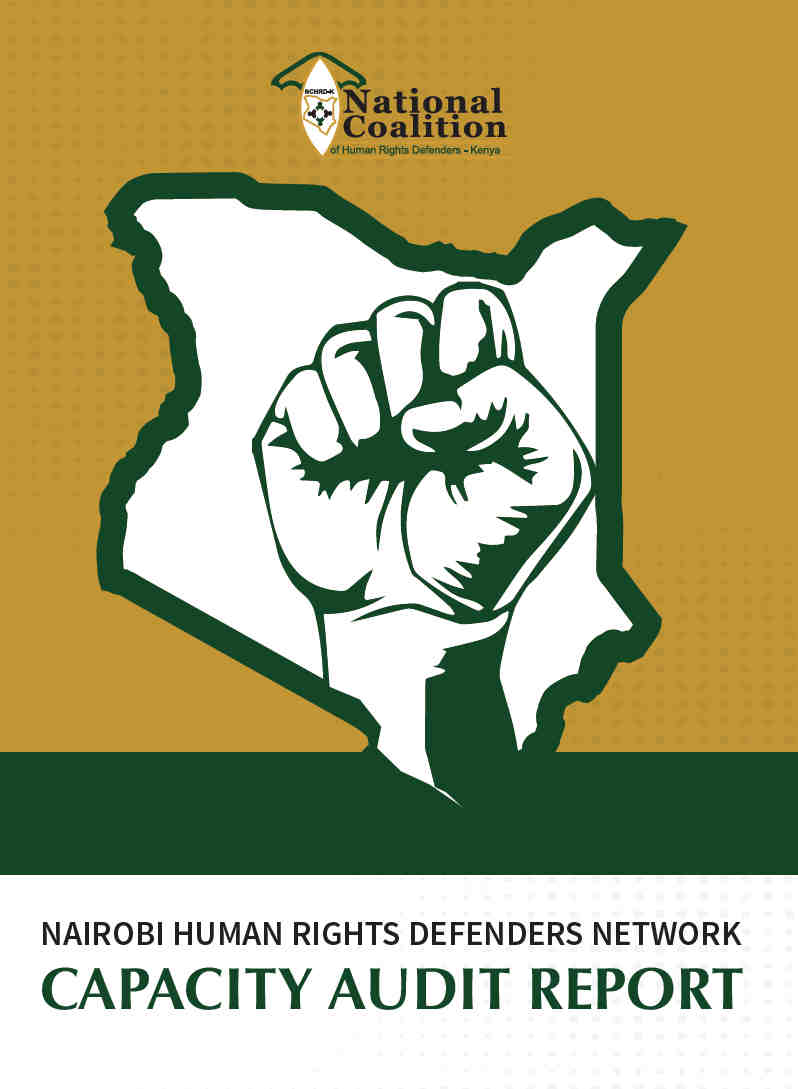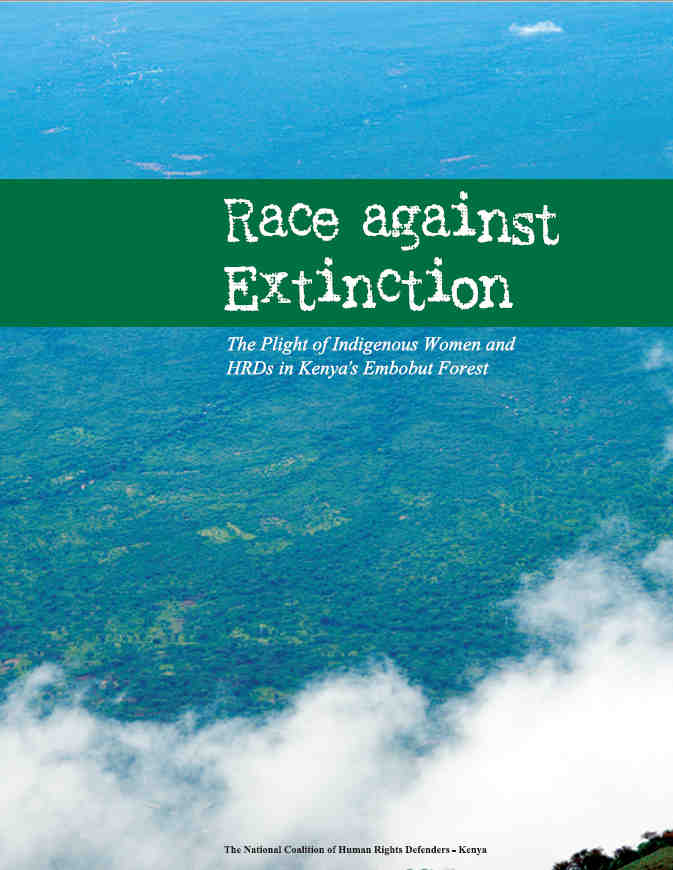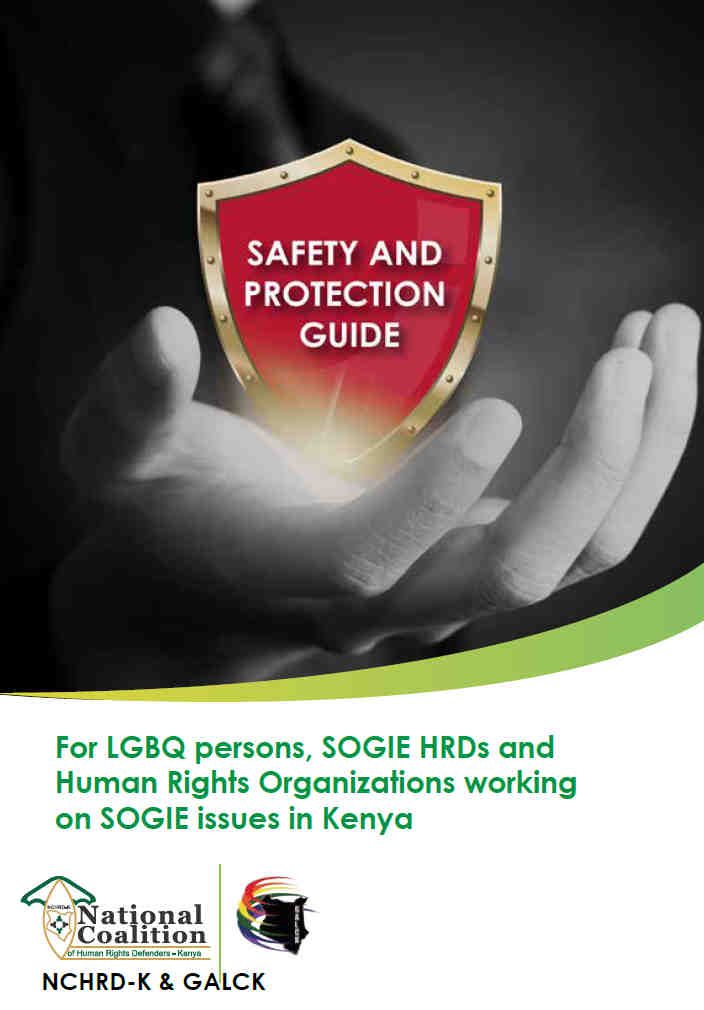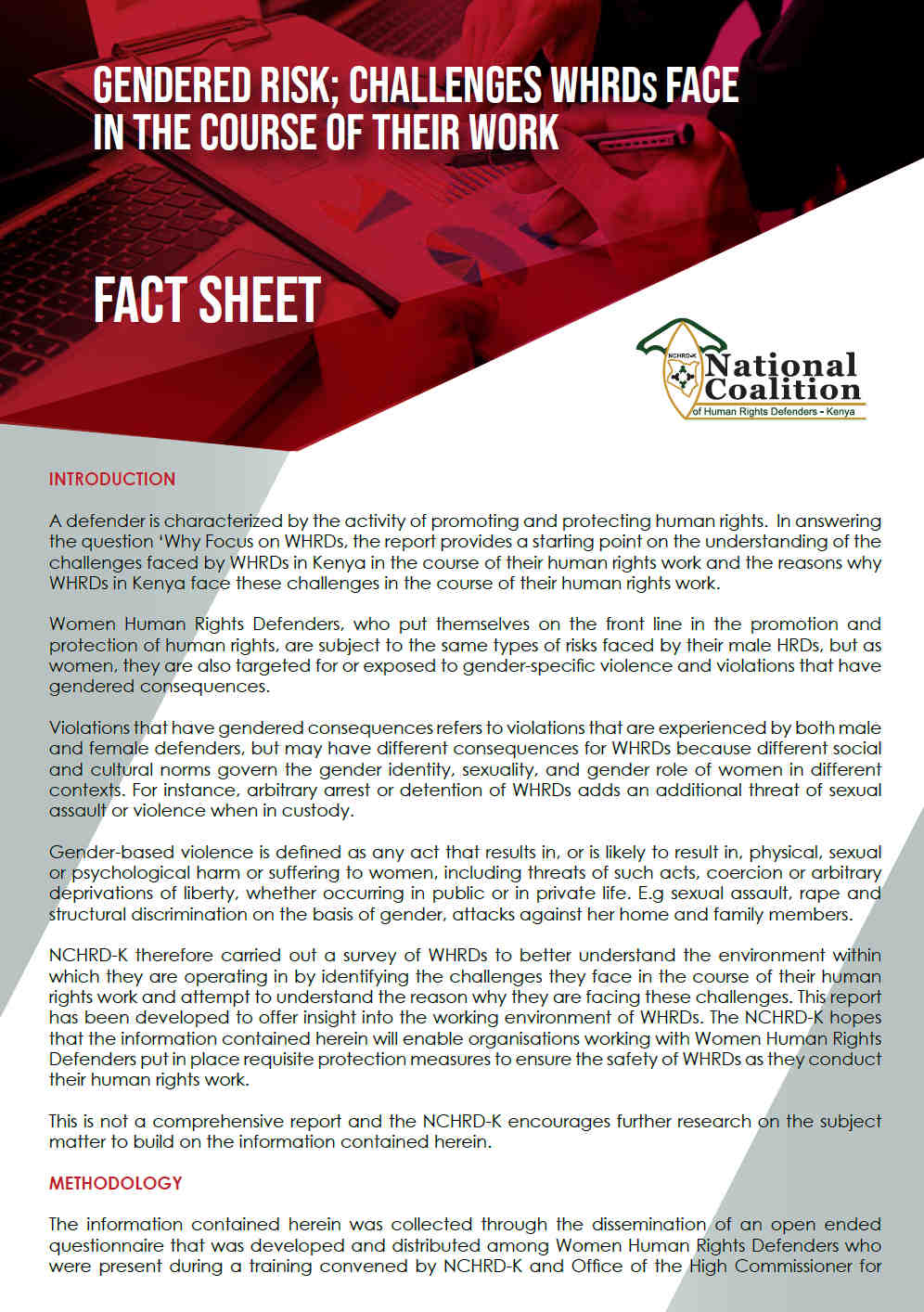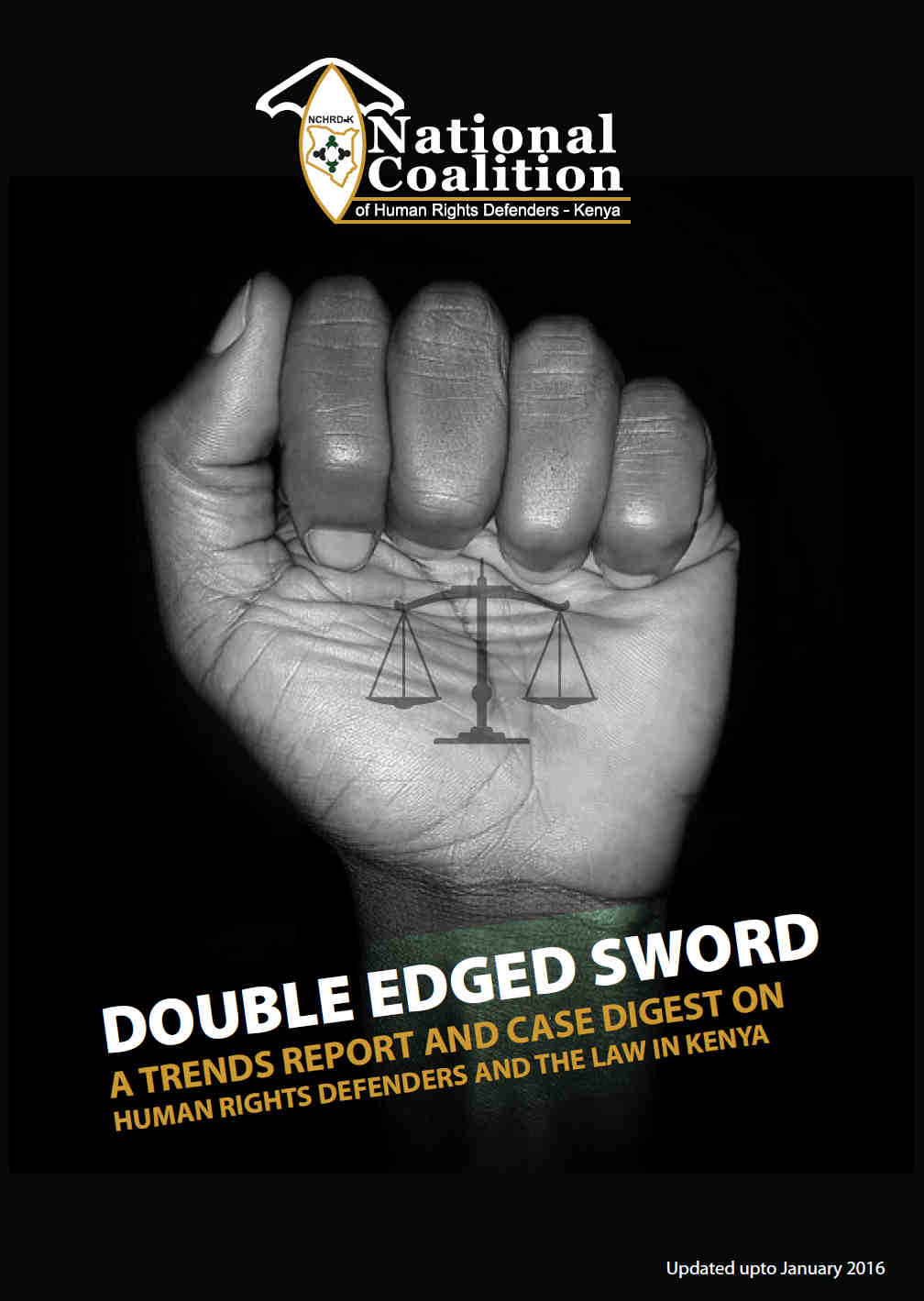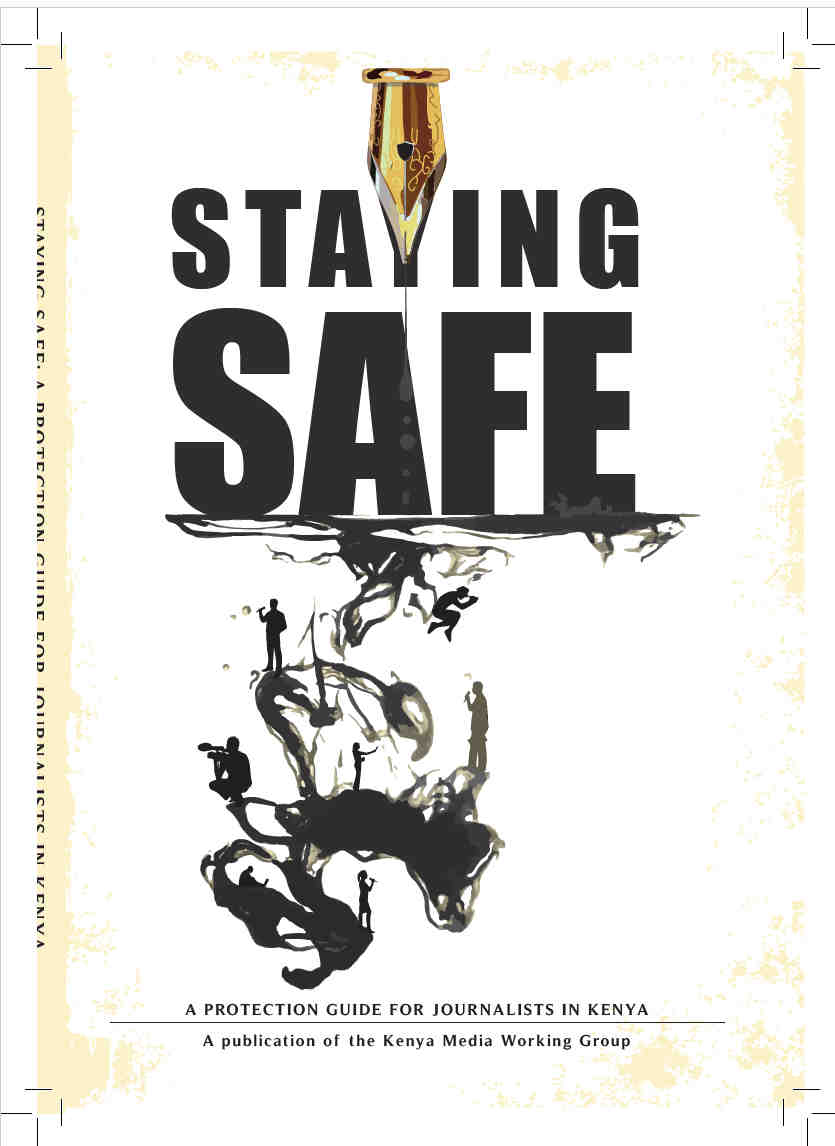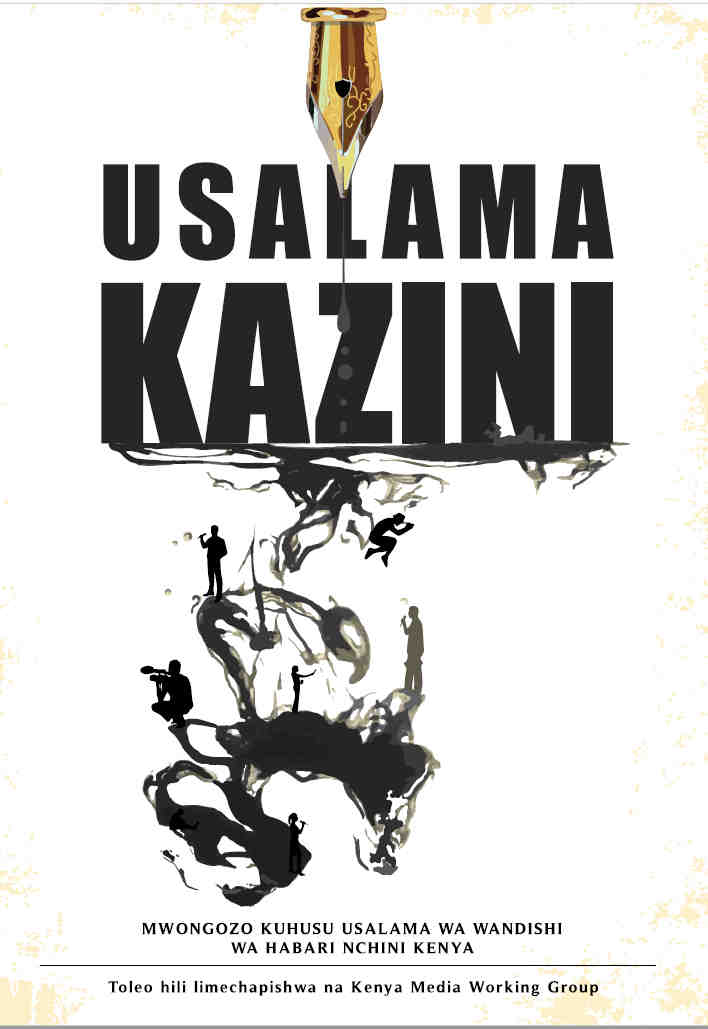Several key issues emerge in the report. First, since 2003, the legal, policy and administrative space for HRDs in Kenya has deteriorated. An increasingly antagonistic relationship between civil society and government has prevailed, triggered by among other things Civil Society Organisations’ (CSOs) advocacy in favour of the Kenyan cases before the International Criminal Court (ICC) and CSOs’ demands for respect for rule of law in security operations. Second, as a result of CSOs and HRDs advocacy activities, the State has pursued retrogressive measures that curtail the work of HRDs and CSOs through the enactment of laws that criminalize their work. Legislation such as the Security Laws (Amendment) Act (SLAA) 1 and attempts to amend the Public Benefit Organisations Act2 before it comes into force, points to the State’s determination to control the operation of CSOs in Kenya. Third, the media, including social media, has also borne a heavy burden of restrictive laws such as the SLAA, the Kenya Information and Communication (Amendment) Act 3 and the Media Council Act 4.
Read Report

